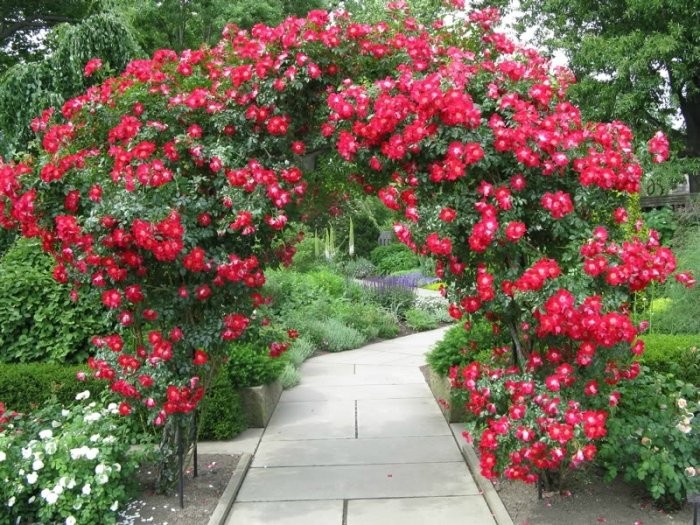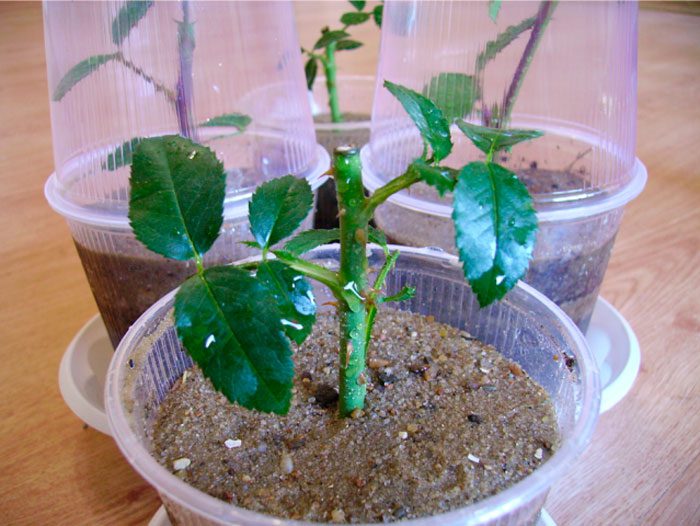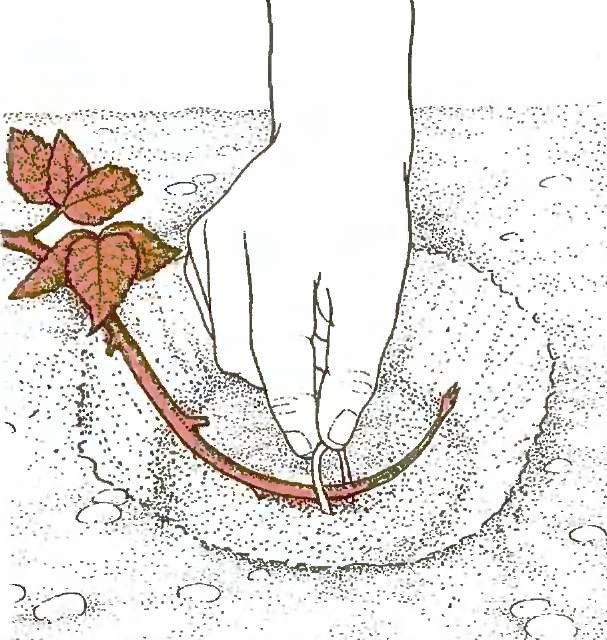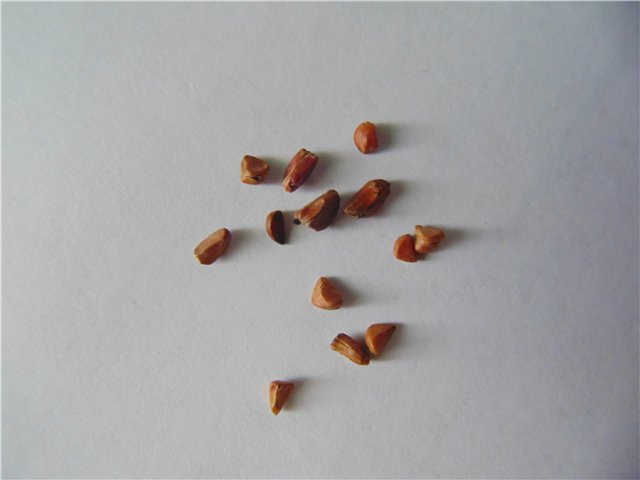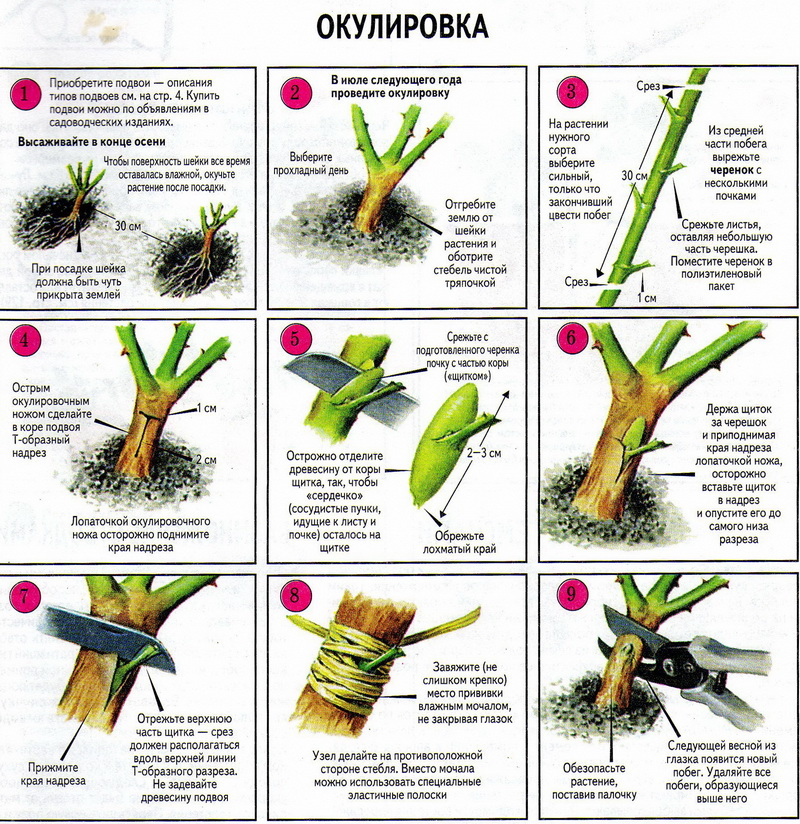How to propagate a climbing rose with your own hands? This is the question asked by those who prefer to surround themselves with gorgeous flowers with a pleasant aroma and a beautiful view.
Climbing rose: reproduction
Roses are flowers that can be planted in the home, balcony and garden. They will look great in a bouquet and on a bush, however, in order to grow a luxurious flower on your own, you will have to work hard, since this culture is very whimsical, not every gardener is able to grow it the first time.
Reproduction is possible by seed, as in many other crops, but gardeners prefer to choose the vegetative method. It is more effective, efficient and allows you to significantly increase the number of roses on the site in the shortest possible time.
The essence of the technique is that the climbing beauty can regenerate as quickly as possible, and this will not cause a decrease in immunity or, moreover, the occurrence of diseases.
All plants obtained in this way are rooting, since when planting a leaf or offspring, each part forms its own roots, and already from them a new plant appears, which will have exactly the same genes as the "parent". You can propagate a rose in the ground or at home in a vegetative way:
- layering;
- root offspring;
- cuttings;
- dividing the bush.
Rooting a climbing rose
How to correctly and effectively reproduce a climbing rose? You need to use the methods presented below.
Cuttings
It is this group of roses that is more suitable than others for cultivation using cuttings, and this method has a lot of advantages:
- planting material is at hand;
- no additional costs are required;
- you can get a new varietal plant in the shortest possible time.
Every gardener knows how to propagate a climbing rose by cuttings, but it must be borne in mind that this technique is not suitable for every variety, and flowering will begin only after a few years. Each technology has its own advantages and disadvantages, and in order to choose the most suitable one, it is worth studying their features.
Cutting a rose is required according to the following rules:
- Shoots are selected that are ripe and at least 5 mm thick.
- They are cut into small appendages so that about 5 buds are present on each.
- The top cut should be straight and the bottom oblique.
- The cut is made with a sharpened instrument, pre-treated with alcohol and rinsed in boiling water.
- From above, the cut is made 2 cm higher from the uppermost kidney, and the lower one is immediately below the first eye.
- If the rooting of the rose will be done immediately, then it is not necessary to cut off all the leaves, this will eliminate nutritional problems.
- Further, the cuttings are processed with a root former.
- A hole is dug to a depth of about 30 cm and is filled in two parts with grass and compost.
- The shoot must be planted in a hole at an angle of 45 ° so that a third of the cutting remains above the ground.
- Next, you need abundant watering.
- For the winter, all such shoots are covered with a dome and insulated.
As for the timing of planting, they are individual for each method.For example, grafting of climbing roses in summer (in July) is done most often, as this allows you to get a better result, however, if you plant at the end of this month, then the bushes will not be able to take root until winter and, accordingly, gain strength, which can lead to their death.
There are many examples when cuttings were planted in September, but it is important to take care of high-quality shelter of the plantings for the winter in order to prevent frostbite. Vaccination is done in summer and spring, as this is due to the period of sap flow, which occurs 2 times a year. Budding falls out precisely at this time, since the bark will be much easier to separate from the cambium, which means that it will be easier for the blank to grow together with other varieties.
Layers
Due to the fact that this plant has long and flexible shoots, it is very easy to propagate it by branches. This is done in the spring, when the ground is already well warmed up, and the bush will be treated from diseases and pests, and also cut off. Correct breeding by layering is that you need to choose a shoot that is at least 1 year old. It must be placed in a shallow groove in the ground, previously fertilized with compost and humus. The whip should be laid horizontally and the tip should be left above the ground. To prevent the lash from protruding from under the ground, it must be pinched with a garden bracket. The tip is tied to a peg so that it begins to reach up.
During the warm season, the cuttings will be able to take root, but to significantly speed up this process, an undercut of the bark near the buds is made before burying. In the ground where the lash takes root, the soil should have been semi-moist, so regular watering, loosening and weed removal are needed. The best option would be to use liquid fertilizers, this will lead to the sprouting of the whip by the end of summer and the appearance of many new shoots, which indicates the appearance of a powerful root system.
The cuttings that have taken root must be separated from the main parent bush and planted in a new place as soon as autumn comes.
Some people believe that it is advisable to leave the roots on the mother bush until spring, as this increases the likelihood of the survival of the seedling during the winter, and transplant the bush as soon as it gets warm. With this reproduction, the rose can bloom in the first year, but it is better to prune so that in the future the bush is stronger and more beautiful.
From each layer, a new plant will be obtained, which by mid-autumn will have its own root system. At the same time, the offspring are rooting, but the division of the bushes must be carried out in the spring, seated in separate parts.
Seeds
The most laborious and time-consuming process is considered when the rose will multiply through seeds. It is planted both in open ground and in a pot at home, but to get the result in the form of an adult flowering plant, you will need to wait several years. Basically, this technique is practiced by breeders to obtain new varieties.
In addition, growing a rose from seed will not allow you to get a new plant with exactly the same qualities as the mother. The color of the petals, their shape and even productivity can be changed.
Seed collection is carried out at the time of reddening of the fruit, and this material will be the most viable. Sowing is carried out in the second decade of April, for which a common seedling box is used, and before the procedure, the seeds must be disinfected with hydrogen peroxide. They will sprout for a long time. To accelerate growth, you can create stressful conditions:
- The material should be in a humid environment with a high temperature for several days.
- Then he goes into the cold for a couple of days. Cooling promotes activation of seeds, and seedlings will appear in just 1.5 months.
At the very beginning of summer, as soon as the warm days have come, planting is carried out in open ground. Minerals, fungicides must be added to the hole to prevent the formation of root rot. The planting should be regularly sprayed with a disinfection solution, and by autumn the seedlings will have a strong and healthy root system. If by the onset of winter the bushes are not very strong, then they should be transplanted into pots and kept at home, for example, in a cellar.
Eyes
How to root a rose and grow a healthy bush? This can be done by grafting the eye of varietal roses on healthy bushes with wild rose hips. This method is called budding. A grafted crop will grow much faster than a self-rooted one, but care is also difficult. Those flowers that are grown on their roots will have increased vitality, and therefore better frost resistance.
Further care rules
Regardless of the way in which the climbing rose propagated (cuttings, seeds or branches), then it is required to provide it with the highest quality care. To grow a new bush, and it looked beautiful, you will need to follow the recommendations below:
- It is strictly forbidden to plant a rose in heavy clay soil, as well as where groundwater is close.
- Since the plant has a root system located close to the surface of the earth, it is required to regularly water it frequently.
- Saplings need a hole with loose soil and slightly raised ground, which will eliminate stagnant water.
- Periodically, it is required to mulch the soil with sawdust and chopped straw.
- We need regular feeding so that the young plant gains strength by the fall and winters well. For this, liquid complex fertilizers are used.
Growing roses is considered not only moral satisfaction, but also an opportunity to grow a miracle in the form of a beautiful bush with your own hands. For some people, it becomes a lifelong hobby. Novice growers have a lot to learn, including breeding rules.
